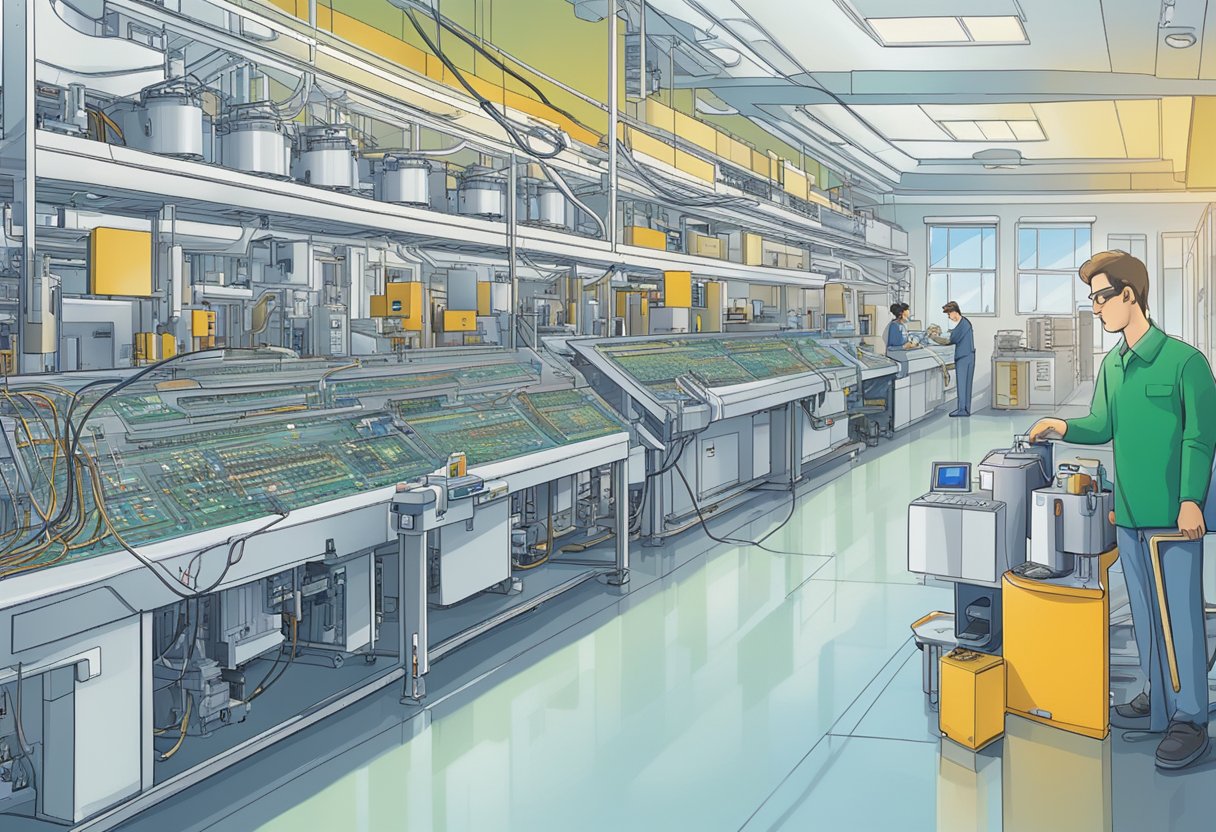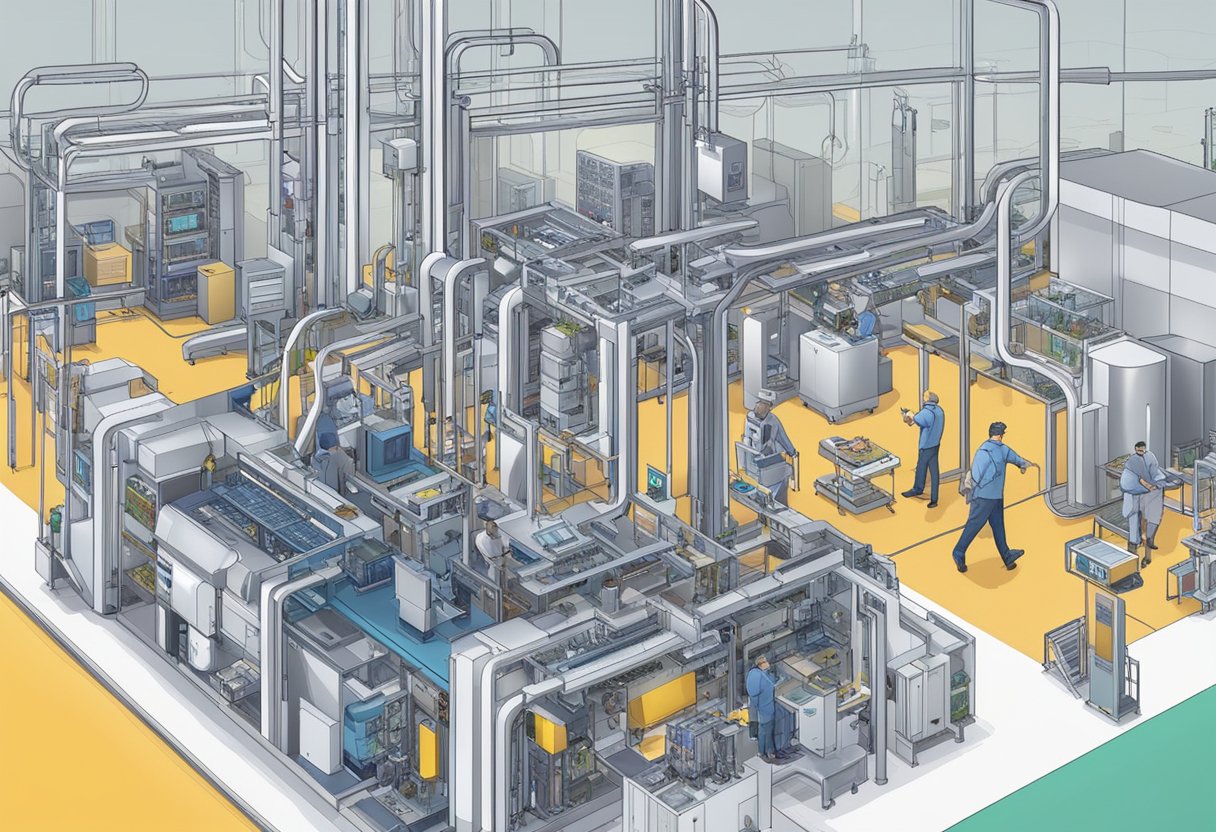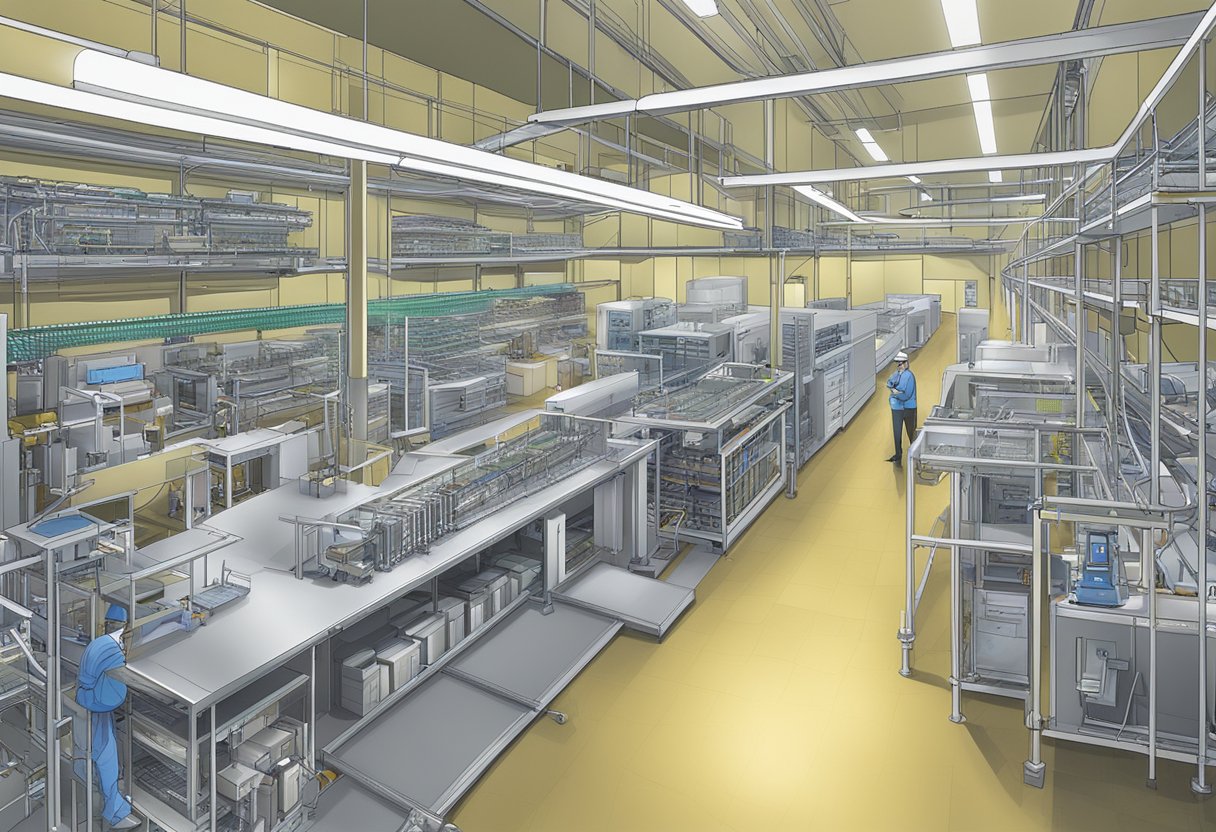How Australia Can Capitalise on Its Semiconductor Industry: Strategies for Growth and Innovation
The semiconductor industry plays a pivotal role in various sectors such as information technology, telecommunications, and consumer electronics. With rapid advancements in technology and increasing global demand for innovative devices, the potential for growth in this industry is immense. Australia, being home to a skilled workforce and robust research environments, has the opportunity to capitalize on its semiconductor industry and create a strong presence on the global stage.

To achieve this, Australia must focus on fostering innovation, encouraging collaboration between academia and industry, and investing in domestic talent. Some successful global players like China and Taiwan have demonstrated how strategic investment in research and development can lead to significant growth in their semiconductor industries. By learning from these experiences, Australia can design policies to support the development of its own semiconductor ecosystem.
Moreover, addressing the global shortage of chips and strengthening supply chain resilience are areas where Australia can make an impact. By focusing on niche markets and offering specialized solutions to global challenges, the country can position itself as a key player in the international semiconductor landscape. Overall, the key to Australia’s success in capitalizing on its semiconductor industry lies in fostering innovation, collaboration, and strategic investment in the right areas.
Australia’s Semiconductor Industry Potential

Australia has significant potential to capitalize on its semiconductor industry. The semiconductor industry involves the production of chips, which are essential components in various electronic devices. These chips are manufactured in specialized facilities known as foundries or fabs, which use silicon as a primary material for producing semiconductors.
One advantage that Australia has in the semiconductor industry is its strong track record of innovation. The country has world-class research institutions and skilled workforce, which can contribute to the development of cutting-edge semiconductor technologies. Furthermore, the growing global demand for semiconductors due to the rise of the Internet of Things (IoT) and digitization provides a favorable market environment for the Australian semiconductor industry to thrive.
Moreover, Australia can leverage its proximity to Asia, which is a major hub for semiconductor manufacturing. This presents an opportunity for Australian semiconductor companies to establish partnerships with leading Asian semiconductor manufacturers, enabling the exchange of knowledge, technology, and resources to help the Australian industry become more competitive globally.
In addition, the Australian government recognizes the potential of the semiconductor industry and has expressed support for its development. Policies and incentives can be put in place to attract investment in the sector, such as grants for research and development or tax breaks for companies operating in the industry.
To capitalize on the potential of the semiconductor industry, Australia must focus on nurturing its talent pool, investing in research and development, and building strong relationships with international partners in the industry. By doing so, Australia can play a significant role in the global semiconductor market, leading to increased economic growth and job opportunities within the country.
Strengthening the Local Supply Chain

The key to capitalizing on Australia’s semiconductor industry lies in strengthening the local supply chain. Developing a robust and reliable supply chain will enable domestic semiconductor manufacturers to grow, gain a competitive advantage, and promote innovation.
Enhancing the semiconductor supply chain in Australia can be achieved through different approaches, such as fostering closer collaboration between industry stakeholders, investing in research and development (R&D), and leveraging the nation’s existing resources. For instance, the New South Wales (NSW) government can play a pivotal role in promoting collaboration through the creation of technology clusters or funding initiatives.
Moreover, Australian research institutions, such as the Commonwealth Scientific and Industrial Research Organisation (CSIRO) and the Australian National Fabrication Facility (ANFF), can contribute significantly to the growth of the semiconductor industry. CSIRO can focus on advancing semiconductor technologies through R&D projects, while ANFF can provide access to state-of-the-art fabrication facilities for Australian businesses.
Another crucial aspect in strengthening the local supply chain is training and development. Building a skilled workforce with expertise in semiconductor manufacturing, logistics, and engineering is essential for maintaining a competitive edge in the global market. Educational institutions and industry players can collaborate to design tailored training programs and curricula that address the needs of the sector.
Lastly, embracing sustainability in the semiconductor supply chain is vital. Adopting environmentally sound practices, such as using energy-efficient technologies and reducing waste, will not only enhance the reputation of the Australian semiconductor industry but also contribute to a greener economy.
In summary, reinforcing the local supply chain in the Australian semiconductor industry requires a multifaceted approach. Fostering collaboration, investing in R&D, building a skilled workforce, and prioritizing sustainability are key strategies that can help the nation capitalize on its potential in this burgeoning field.
International Partnerships and Challenges
The Australian semiconductor industry can leverage its potential by establishing international partnerships while addressing the evolving challenges. Engaging in collaborations with key players like the US, Taiwan, Japan, the EU, the UK, South Korea, China, and Singapore can help drive innovation, technology transfer, and growth in this sector.
One important collaboration could be with Taiwan Semiconductor Manufacturing Co (TSMC), currently a global leader in the semiconductor industry. Forming strategic partnerships with TSMC could enable Australia to gain insights into cutting-edge manufacturing processes, enabling domestic companies to improve their technological capabilities and competitiveness.
Additionally, the newly formed AUKUS alliance, comprising Australia, the UK, and the US, presents an opportunity for Australia to further develop its semiconductor industry through increased cooperation in research, development, and trade among the three nations. This can lead to the creation of new jobs, attracting foreign investments, and fostering robust supply chains.
However, the Australian semiconductor industry also faces significant challenges in navigating the complex global landscape. One of the major challenges is the constant technological advancements in the industry, which require a considerable investment in research and development activities. To stay competitive and relevant in the market, Australia must invest in the latest manufacturing technologies and upskill its workforce accordingly.
Another challenge stems from the increasing geopolitical tensions between countries such as the US and China. This can have implications on Australia’s trade and collaboration opportunities, affecting the growth and stability of its semiconductor industry. Maintaining a neutral stance while still pursuing international partnerships can be a delicate balance for Australia.
Despite these challenges, Australia must continue to forge partnerships with leading entities in the semiconductor market, fostering innovation and collaboration. By addressing these hurdles strategically, the Australian semiconductor industry can capitalize on its potential and contribute significantly to the global market.
Advance Technologies and Future Directions
The semiconductor industry in Australia has promising opportunities to capitalize on its potential by embracing advanced technologies and moving towards future directions. With growing global demand for modern computing solutions, Australia can strategically position itself by focusing on various aspects of the semiconductor industry, including industrial, health, security, and space applications.
One of the key areas for growth is artificial intelligence (AI) and the development of advanced sensors and chips for supporting AI-driven applications, such as autonomous vehicles, robotics, and smart cities. Australia can further strengthen its semiconductor industry by investing in the research and development of cutting-edge quantum computing technologies. Quantum technologies have the potential to revolutionize industries such as healthcare, security, and finance, by solving complex problems more efficiently than classical computers.
Additionally, the demand for advanced storage and memory solutions is increasing due to the exponential growth of data in various sectors. Australia can capitalize on this trend by developing next-generation memory devices and efficient storage technologies. Moreover, wireless communication advancements present a significant opportunity for the country to expand its semiconductor industry by catering to the increasing demand for high-speed, low-latency, and energy-efficient communication systems.
The automotive industry also provides a substantial market for semiconductors, especially in the realm of electric vehicles and advanced driver assistance systems. By investing in this domain, Australia can further grow its semiconductor industry and contribute to sustainable automotive solutions.
As the geopolitics of the semiconductor industry evolve, Australia must remain aware of the emerging trends and potential challenges. By developing strategic partnerships and collaborations, Australia can leverage its unique position to establish itself as a leading player in the advanced technology sector.
In conclusion, Australia can capitalize on its semiconductor industry by focusing on various aspects such as AI, quantum computing, advanced storage solutions, wireless communication, and the automotive industry. By investing in research and development, forging strategic partnerships, and positioning itself in the global market, Australia can ensure sustainable growth and success in the semiconductor industry.

